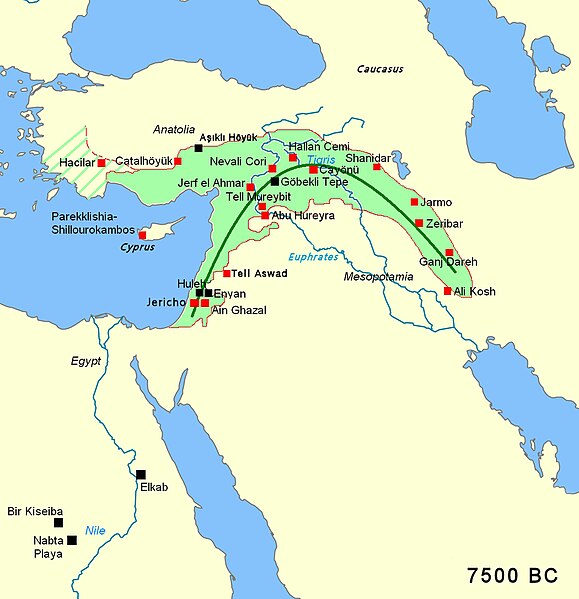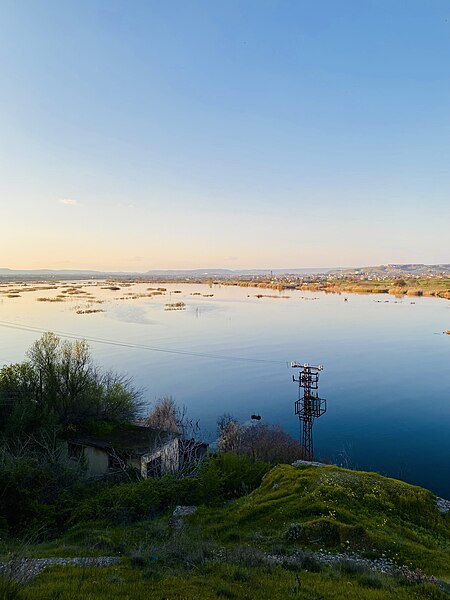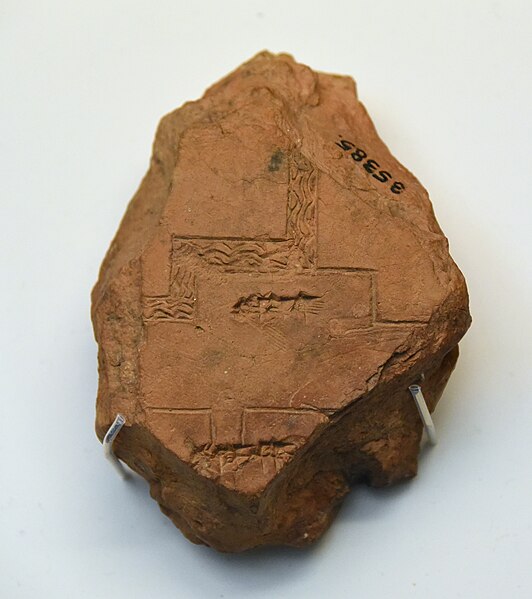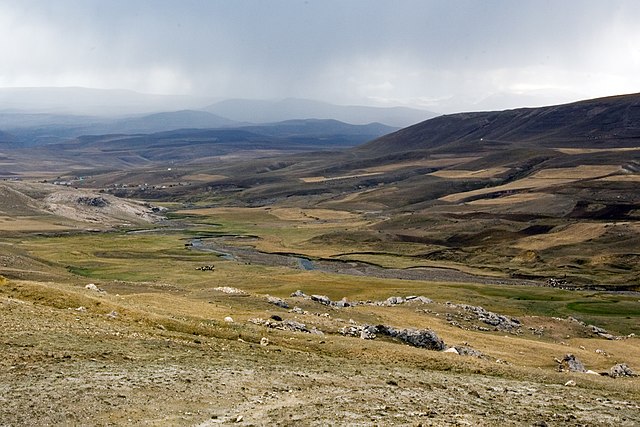Tell Abu Hureyra is a prehistoric archaeological site in the Upper Euphrates valley in Syria. The tell was inhabited between 13,300 and 7,800 cal. BP in two main phases: Abu Hureyra 1, dated to the Epipalaeolithic, was a village of sedentary hunter-gatherers; Abu Hureyra 2, dated to the Pre-Pottery Neolithic, was home to some of the world's first farmers. This almost continuous sequence of occupation through the Neolithic Revolution has made Abu Hureyra one of the most important sites in the study of the origins of agriculture.
The Fertile Crescent c. 7500 BC, with main Pre-Pottery Neolithic sites. Central and southern Mesopotamia lacked sufficient rainfall to be settled by humans yet.
Stones used to grind cereal grains, Abu Hureyra, c. 9500–9000 BC. British Museum.
The Euphrates is the longest and one of the most historically important rivers of Western Asia. Together with the Tigris, it is one of the two defining rivers of Mesopotamia. Originating in Turkey, the Euphrates flows through Syria and Iraq to join the Tigris in the Shatt al-Arab in Iraq, which empties into the Persian Gulf.
The Euphrates in Gaziantep, Turkey.
Plan, topographic representation of Babylon. The clay tablet depicts "Tu-ba", a suburb of the ancient city of Babylon. The River Euphrates is represented by the water-lined band. 660-500 BCE. British Museum
View of the Murat River
Rafetus euphraticus






